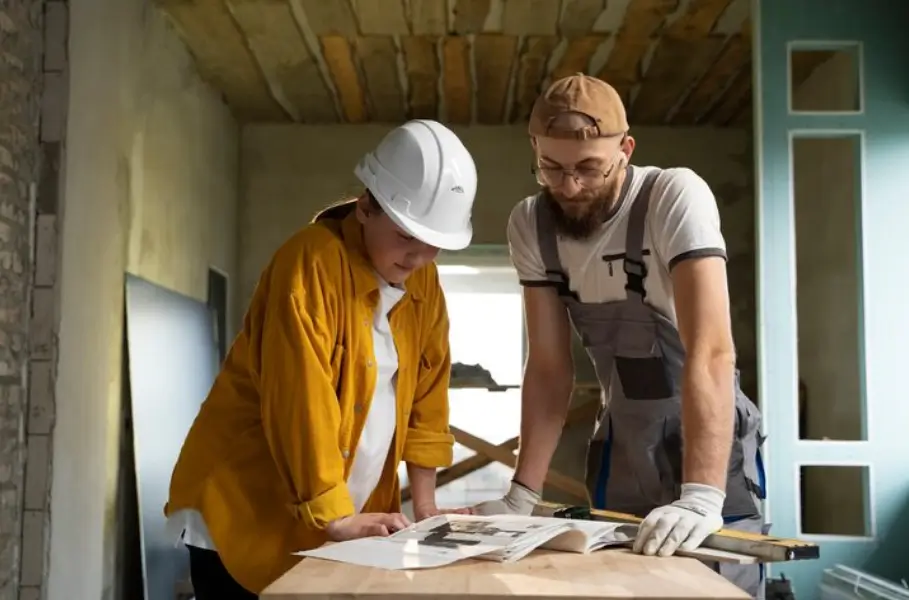Homeowners often use the terms basement renovation and remodeling interchangeably, but these projects involve different scopes of work, budgets, and outcomes. Understanding the distinction helps you communicate clearly with contractors and set realistic expectations for your project. The difference impacts everything from permits to timelines to final costs.
Defining Basement Renovation
Basement renovation focuses on restoring or updating existing finished spaces. This work typically involves replacing worn materials, updating fixtures, and refreshing the appearance without changing the fundamental layout or purpose of the space. Renovation projects repair damage, modernize outdated elements, and improve functionality within the current configuration.
Common basement renovation projects include replacing carpet with new flooring, updating light fixtures, repainting walls, or installing new cabinet hardware. These changes improve the space’s appearance and function but don’t require moving walls or changing room purposes. A renovation might update a 1990s-style basement rec room with contemporary finishes while keeping the same basic floor plan.
Renovation work generally costs less than remodeling because it works within existing structures. You’re not moving plumbing lines, adding electrical circuits, or reconfiguring the layout. This approach makes sense when the current basement layout meets your needs but looks dated or shows wear from years of use.
Basement Remodeling
Basement remodeling involves more extensive changes that alter the space’s layout, structure, or purpose. This work might include adding or removing walls, creating new rooms, installing bathrooms, or converting unfinished areas into living spaces. Remodeling projects reimagine how the basement functions for your family’s current needs.
A typical basement remodeling project might divide one large room into separate spaces for a home office and guest bedroom. It could involve adding a full bathroom where none existed, requiring new plumbing lines and drainage. Some remodeling projects convert utility areas into finished spaces, moving mechanicals to create more usable square footage.
Remodeling requires more extensive permits because it often involves structural, electrical, and plumbing changes. These projects take longer to complete and cost significantly more than renovations. However, remodeling allows you to customize the basement to your exact specifications rather than working around existing limitations.
Scope of Work Comparison
The scope of work provides the clearest distinction between renovation and remodeling. Renovation projects typically involve surface-level improvements and replacements. You might install new drywall over damaged areas, replace old drop ceiling tiles with a drywall ceiling, or update bathroom fixtures without moving plumbing connections.
Remodeling projects change the bones of the space. This includes framing new walls, running new electrical circuits, installing HVAC ductwork, or adding plumbing for kitchens and bathrooms. Structural modifications like removing support posts or installing larger windows fall under remodeling rather than renovation.
Consider a basement with water damage from past flooding. A renovation would replace damaged drywall and flooring, perhaps adding better waterproofing paint. A remodel might include installing a French drain system, raising the floor level, and completely reconfiguring the layout to better handle moisture issues.
Budget Considerations
Budget differences between renovation and remodeling can be substantial. Basement renovation costs typically range from $20 to $50 per square foot, depending on the quality of materials and extent of updates. This includes new flooring, paint, lighting, and minor electrical updates within existing configurations.
Basement remodeling costs start around $50 per square foot and can exceed $150 for high-end projects. These higher costs reflect structural work, new mechanical systems, and the complexity of creating entirely new spaces. Adding a bathroom alone can cost $15,000 to $25,000 due to plumbing requirements.
Hidden costs appear more frequently in remodeling projects. Moving walls might reveal outdated wiring that requires updating to meet code. Creating new rooms could require upgrading your electrical panel to handle additional circuits. These discoveries add to the project’s final cost but are necessary for safety and functionality.
Timeline Differences
Renovation projects typically complete faster than remodeling projects. A basement renovation might take two to six weeks, depending on the scope. Contractors can often work on multiple areas simultaneously since they’re not waiting for inspections or complex installations.
Remodeling projects require careful sequencing of different trades. Framing must be completed and inspected before electrical and plumbing rough-ins. These systems need inspection before insulation and drywall installation can begin. A basement remodel often takes two to four months, with some complex projects extending longer.
Weather can impact remodeling timelines more than renovations, particularly if the project includes exterior work like adding egress windows or improving drainage. Interior renovations proceed regardless of weather conditions, making scheduling more predictable.
Permit Requirements
Renovation projects may not require permits if they involve only cosmetic changes. Replacing flooring, painting, and updating fixtures typically don’t need official approval. However, any electrical work beyond replacing fixtures, plumbing changes, or structural modifications require permits even in renovation projects.
Remodeling projects almost always require multiple permits. Building permits cover structural changes, electrical permits address new circuits or panel upgrades, and plumbing permits govern new fixture installations. Some jurisdictions require separate HVAC permits for ductwork modifications or new system installations.
Working without required permits creates liability issues and can complicate home sales. Inspectors may require you to remove completed work to verify code compliance. Always verify permit requirements with your local building department before starting any basement project.
Impact on Home Value
Both renovation and remodeling can increase home value, but they offer different returns on investment. Basement renovation typically returns 70-80% of the project cost in increased home value. These projects make the home more appealing to buyers without dramatically changing the property’s functionality.
Basement remodeling can return 60-75% of project costs, though this varies significantly based on the improvements. Adding a legal bedroom and bathroom creates more value than a large open recreation room. Income-generating improvements like separate entrances for rental units provide ongoing returns beyond property value increases.
Market conditions in your area influence which approach makes more sense. In hot real estate markets, any finished basement space adds significant value. In slower markets, over-improving your basement relative to neighborhood standards might not generate proportional returns.
Choosing the Right Approach
Assess your current basement’s condition and your family’s needs before deciding between renovation and remodeling. If the layout works but finishes look dated, renovation refreshes the space cost-effectively. When your needs have changed significantly or the current configuration doesn’t function well, remodeling provides better long-term value.
Consider how long you plan to stay in your home. Renovation makes sense for shorter-term ownership since it improves livability without massive investment. Remodeling suits homeowners planning to stay many years who want to customize the space for their specific needs.
Factor in disruption to your household when choosing between approaches. Renovation creates less upheaval since major systems remain in place. Remodeling projects generate more dust, noise, and restricted access to basement areas. Some remodeling projects might temporarily impact utilities for the entire house.
Professional Guidance
Consult with experienced contractors early in your planning process. They can assess your basement’s current condition and help determine which approach best meets your goals and budget. Professional insight often reveals possibilities you hadn’t considered or limitations you need to address.
Design professionals provide valuable input for both renovation and remodeling projects. They help maximize your investment by suggesting layouts, finishes, and features that add the most value. Their experience with similar projects helps avoid common mistakes and ensures code compliance.
Getting multiple opinions helps you understand the full range of options. What one contractor presents as requiring full remodeling might be achievable through creative renovation by another. Compare approaches, costs, and timelines before committing to a specific direction for your basement project.

